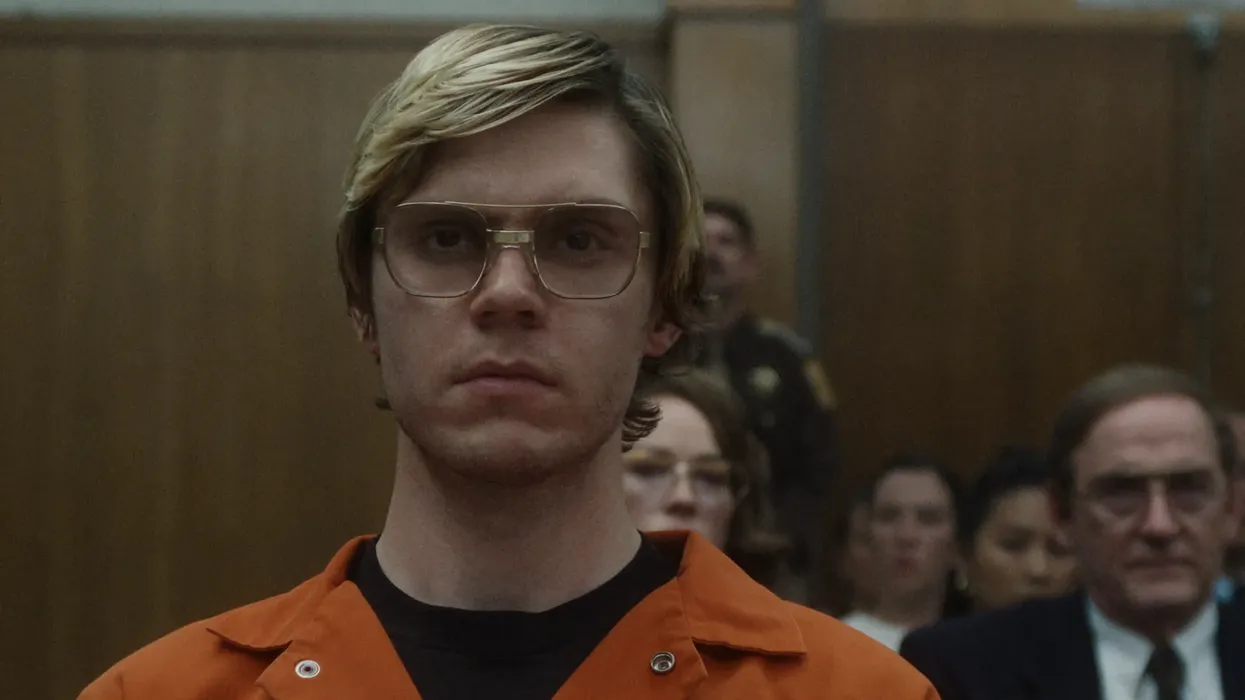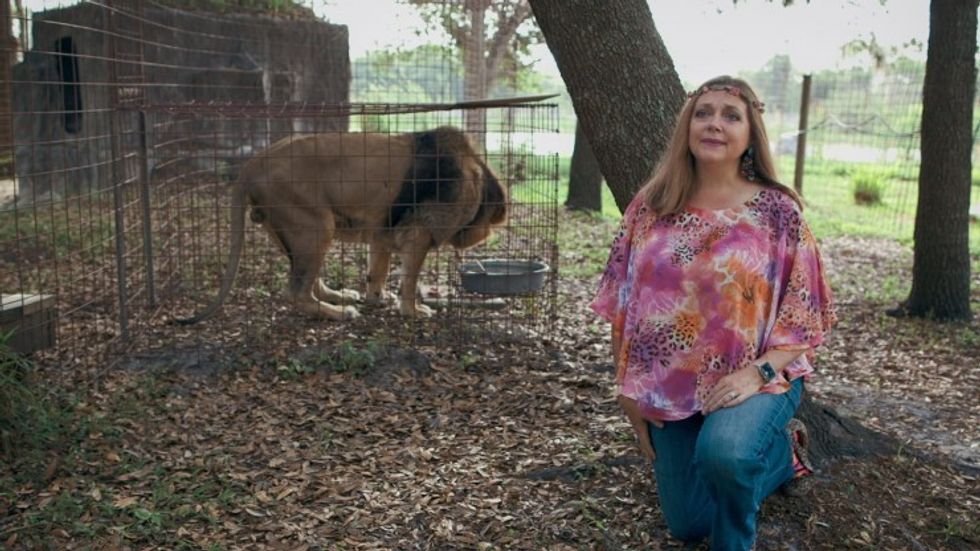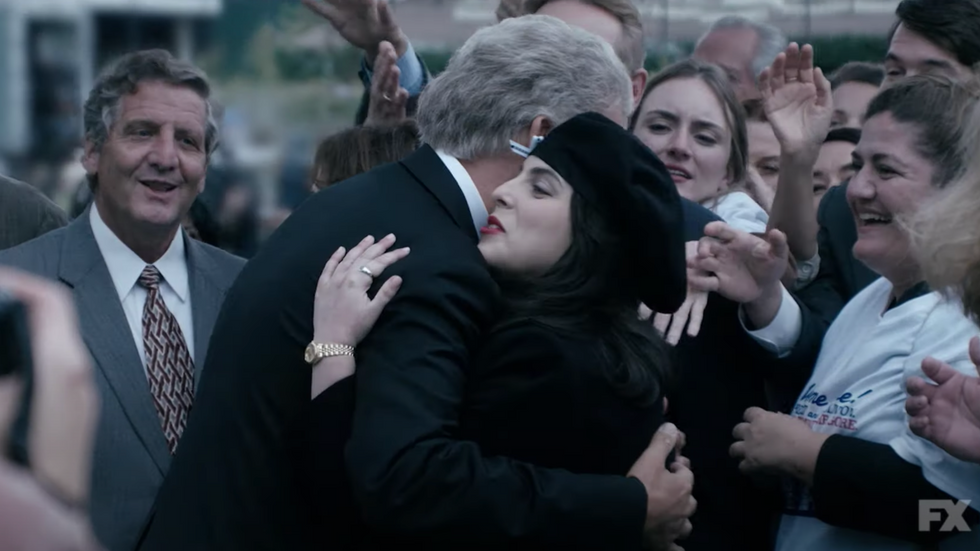The 6 Most Cinematic Documentaries of the Year
These documentaries belong on the big screen.

Whenever I tell someone that I make documentary films, they almost always offer a very well-intentioned response that goes something like this: “Oh, I love documentaries! I just saw the most interesting one on the History Channel about the Battle of Some Famous War."
This list is for them, and for those of you who already know that many of today's docs are sweeping, dramatic, contemporary tales worthy of the big screen. This was a banner year for such films.
There are, however, some notable exceptions from this list, like those that were created expressly for Netflix and therefore wouldn’t quite fall into the “cinematic” camp (Ava DuVernay’s 13th, which is required viewing) and buzzy festival films that haven’t yet been released (like Alma Har’el’s inventive LoveTrue).
1. Epic visuals — Into the Inferno
Director: Werner Herzog

Into the Inferno is what drones and aerial cinematography were made for. It's a global trek in search of volcanoes and the human rituals they inspire, and its myriad shots of boiling magma and smoke billowing over the abyss are sights to behold. Like many of Herzog's films, it's equal parts beautifully shot nature documentary and philosophical treatise. Both sentiments are captured in this piece of Herzog's signature narration: “It’s hard to take your eyes off the fire that burns deep under our feet everywhere…it wants to burst forth and it could not care less what we are doing up here."
2. Painterly detail — The Birth of Saké
Director: Erik Shirai

It's no surprise that Tribeca award-winning documentary The Birth of Saké was shot in Japan by a Japanese-American filmmaker; the beautifully minimal Japanese aesthetic is captured in every frame. It's an observational doc about a 144-year-old brewery, one of the few remaining that creates saké in the intensive traditional style. The film is a series of painterly shots of artful rituals.
Shirai both directed and shot the film with Sony F3 and F5 cameras. He told No Film School: "When I created the palette for this, I was influenced by what was in front of me. I felt like it should be sort of subtle. Saké itself is very subtle. It shouldn't be this overwhelming thing in your palette when you're having a meal; it should play a supporting role.” But don’t assume that the subtlety and unsaturated palette of the visuals create a boring experience—the shots are as smooth and sumptuous as the saké they depict.
3. Flawed character — Weiner
Directors: Josh Kriegman, Elyse Steinberg

It's not always visuals that make a film cinema-worthy. In the case of Weiner, it's a cornerstone of dramatic storytelling: the flawed character on a hero's journey. The pro/antagonist here is Anthony Weiner, the former New York State congressman infamous for sending pictures of his junk to multiple women. The fact that production of this up-close-and-personal doc was probably sold to Weiner as an intimate portrait of his triumphant return to politics after overcoming a scandal makes it all the more tragic, given that it turns out during the course of filming that said scandal has not actually been overcome.
The doc bears another hallmark of classic narrative: the stoic heartbreak of Weiner's admirable wife Huma Abedin, whose increasingly disappointed visage speaks more volumes than 1,000 scripted pages.
4. Stranger-than-fiction drama — Gringo: The Dangerous Life of John McAfee
Director: Nanette Burstein

Just when you might have thought that there couldn't be a public figure more unseemly then Anthony Weiner, Nanette Burstein introduces us to a very different side of renowned anti-virus software developer John McAfee. The disturbing and pulse-pounding story of McAfee's murder charge and ensuing run from the law—which dovetails into a run for the President of the United States—is truly stranger than fiction. I found myself starting wonder if it was indeed a fictionalized account, but when Burstein herself starts to get threats for her work on the film, it becomes all too real. Editing is the real star of this doc, helping to give it the pacing and drama of a narrative film.
5. Narrative structure — Fire at Sea
Director: Gianfranco Rosi

The first few shots of Berlinale winner Fire at Sea set us up for a coming-of-age tale about a young boys on a European island. (It’s something akin to the boys of Stand by Me wandering down those iconic train tracks.) We start to expect one story, but are given another one altogether: the tale of these Italian kids serves as the unwitting parallel to that of the European migrant crisis. As they go about their daily lives shooting birds and slurping spaghetti, desperate refugees are crashing onto the shores of their thoroughfare isle.
It takes us on a journey like the best narratives do, climaxing in a dramatic scene that is sure to haunt any viewer.
The boys can be understood to represent the audience’s own naïveté about the refugee crisis, but the film does not judge. It purposely eschews the conventions of documentary; there's no narration, no interviews, almost no forced context whatsoever. Instead, it takes us on a journey like the best narratives do, climaxing in a dramatic scene that is sure to haunt any viewer.
6. The whole package — The Eagle Huntress
Director: Otto Bell

The Eagle Huntress is the perfect film for this list because it’s not just "good...for a documentary." It's a wonderful, gorgeously shot movie with an inspiring story, regardless of its genre. Its protagonist is a charming 13-year-old Mongolian girl who is determined to learn the dangerous art of hunting game with eagles in the frozen wilderness, despite the objections of community elders who have never allowed a female eagle hunter to join their ranks. Her father, who himself is a champion eagle hunter, agrees to train her.
It's a wild ride. Both the soaring nature scenes and the intimate personal moments are equally beautiful. It's even more impressive when you learn that what looks like a high-budget production was undertaken by a tiny but inventive and dedicated crew. It’s one of the few films I can think of that can be universally enjoyed—ideally with some hot, buttered popcorn at a cinema near you.













